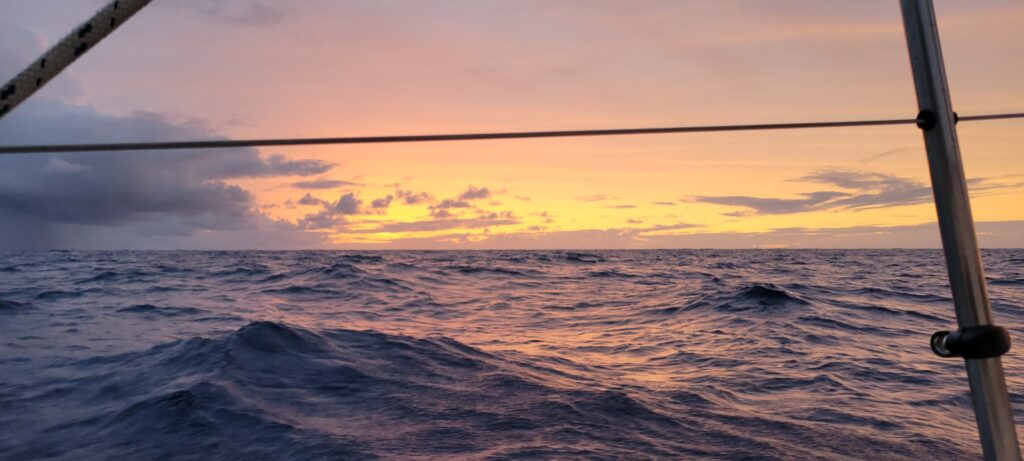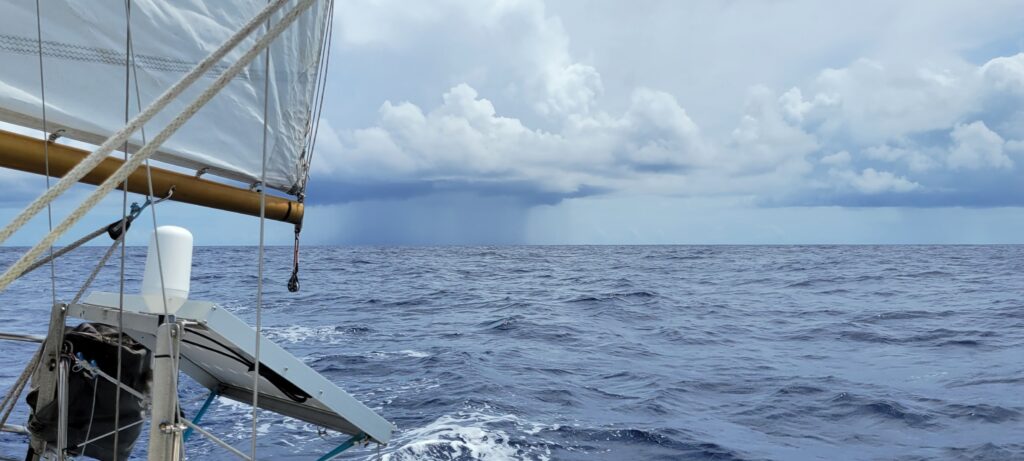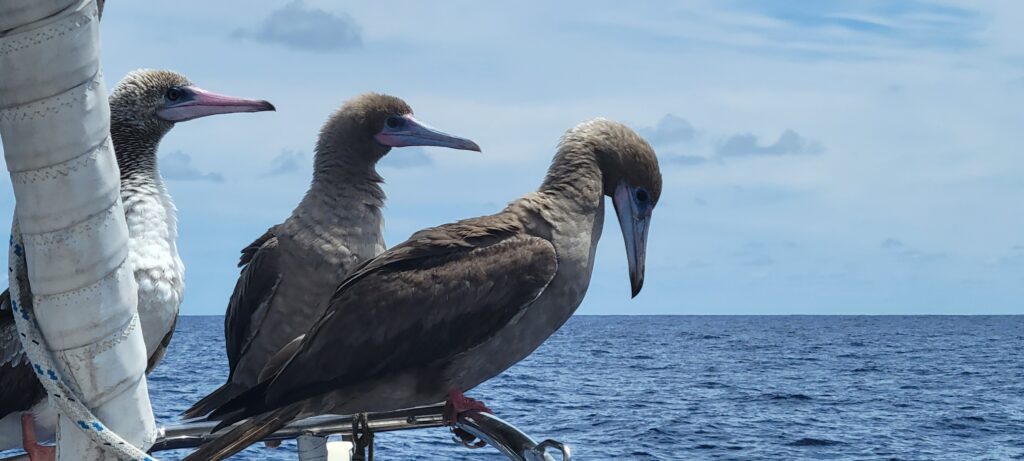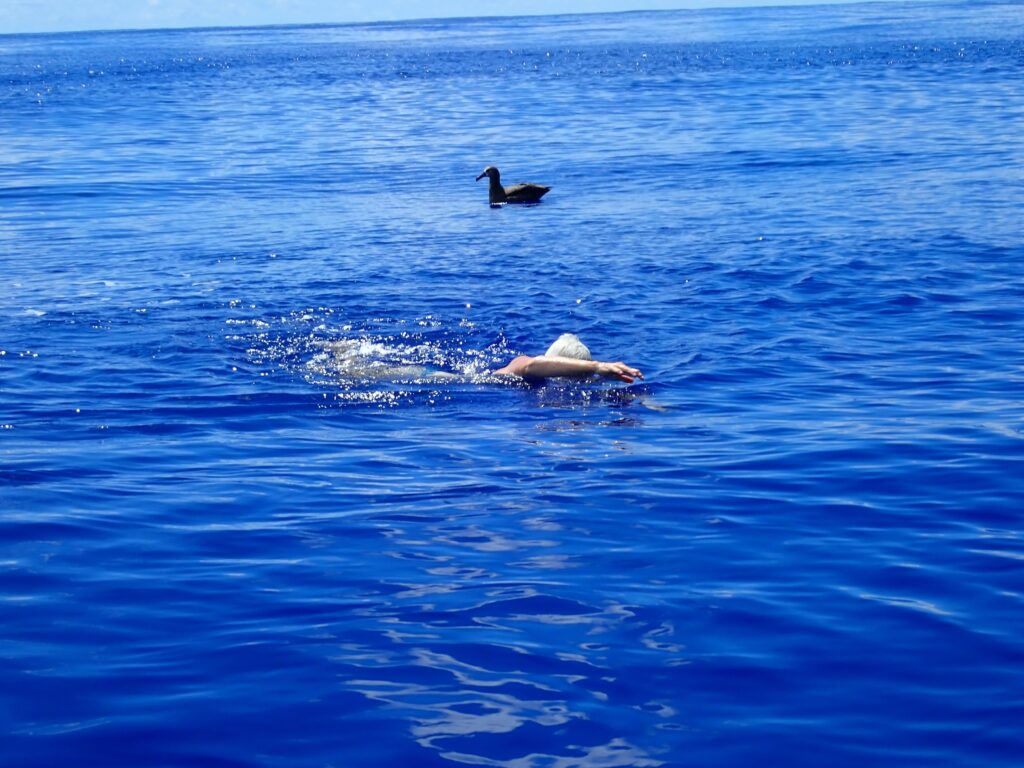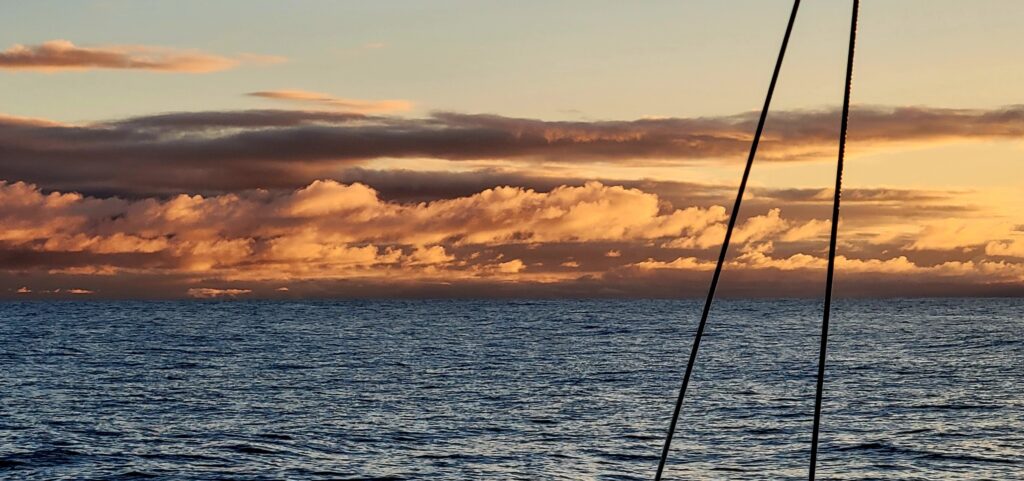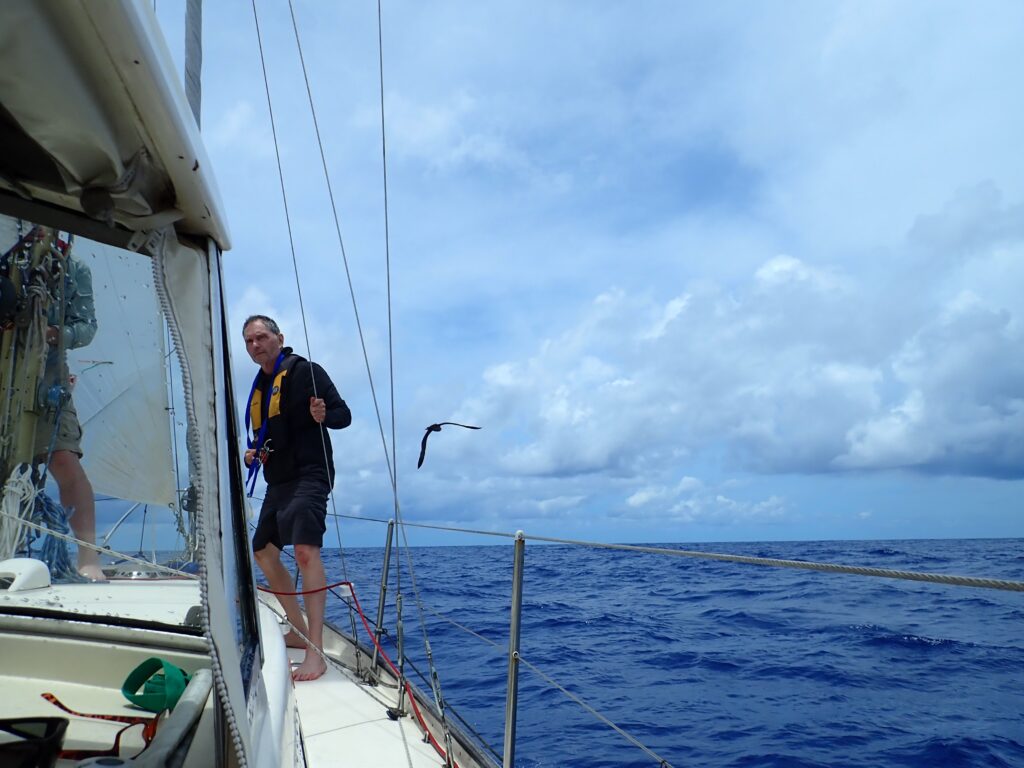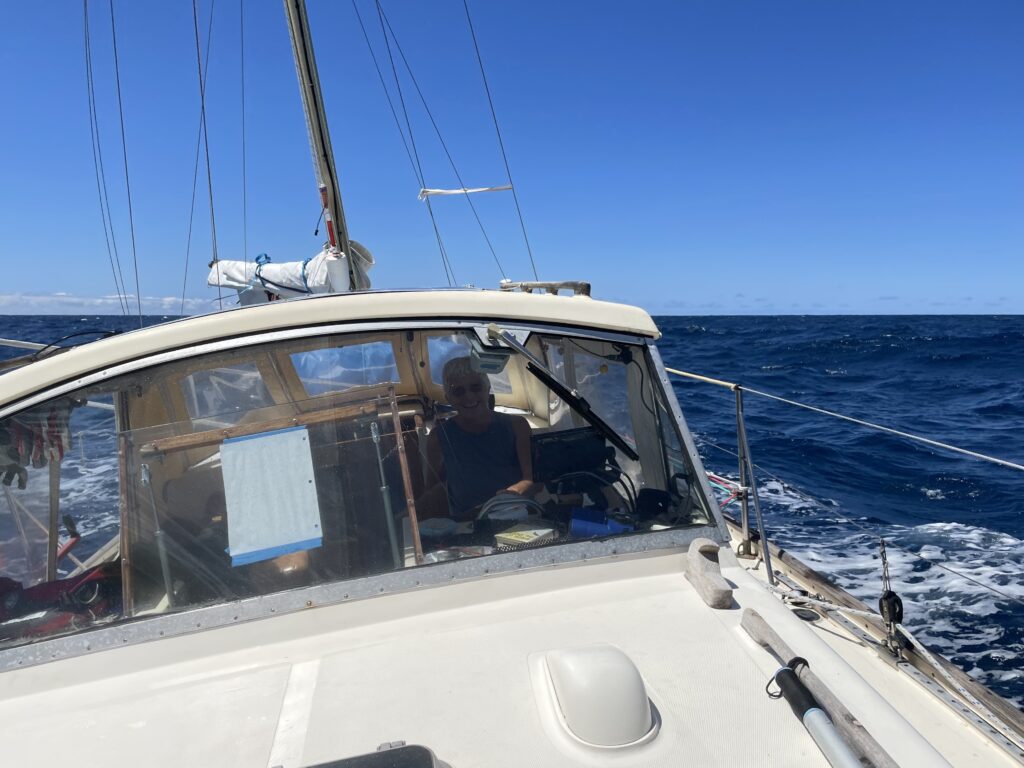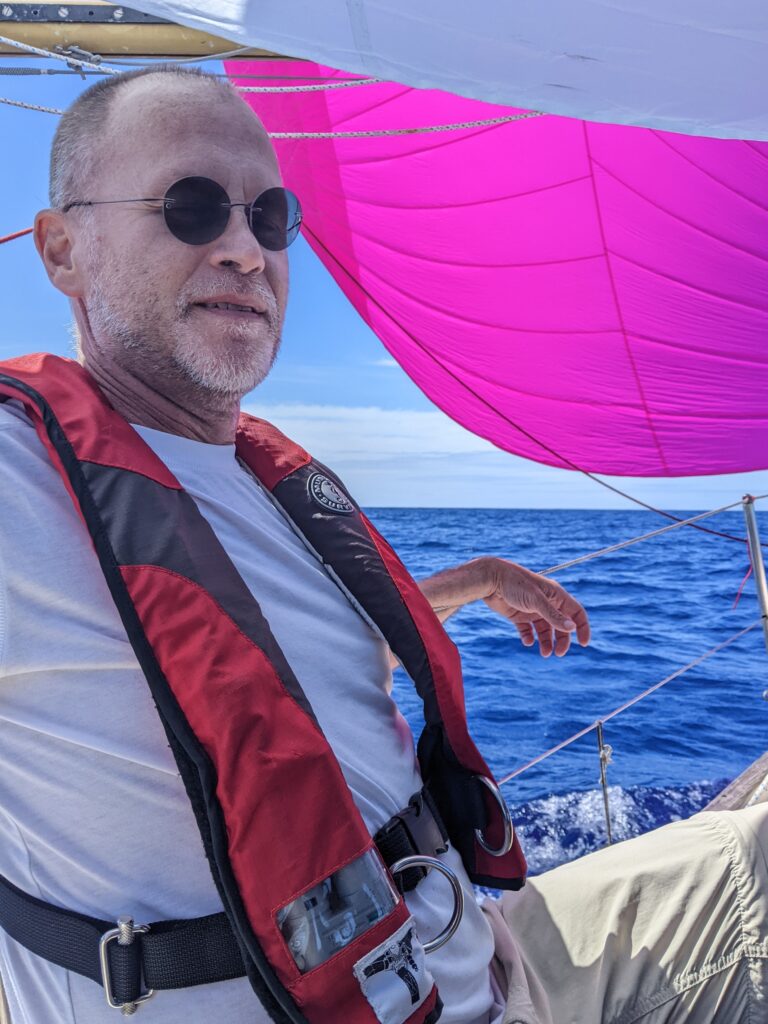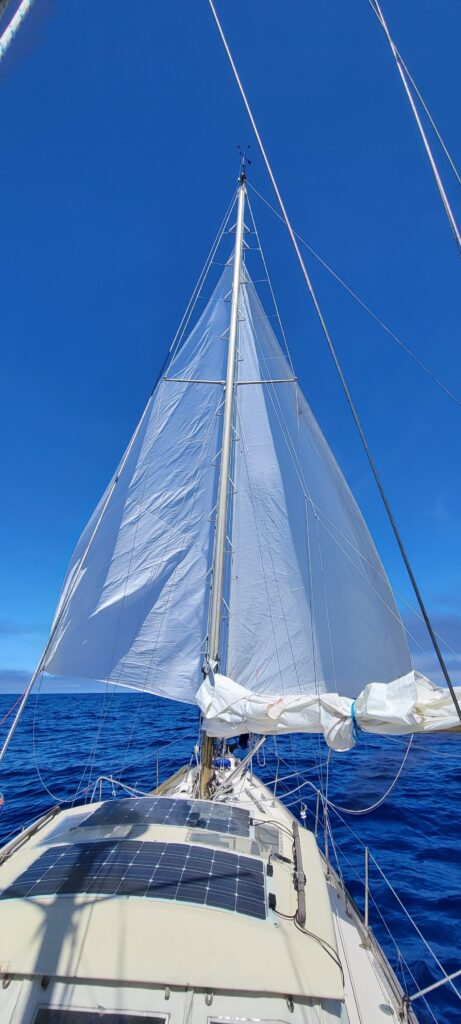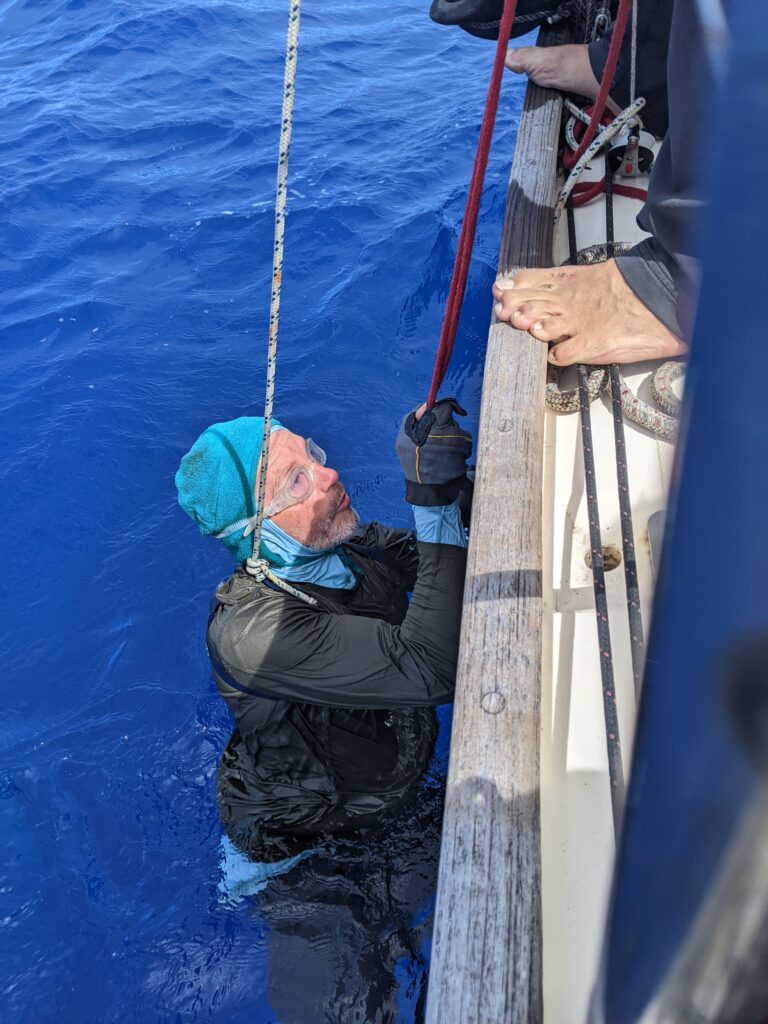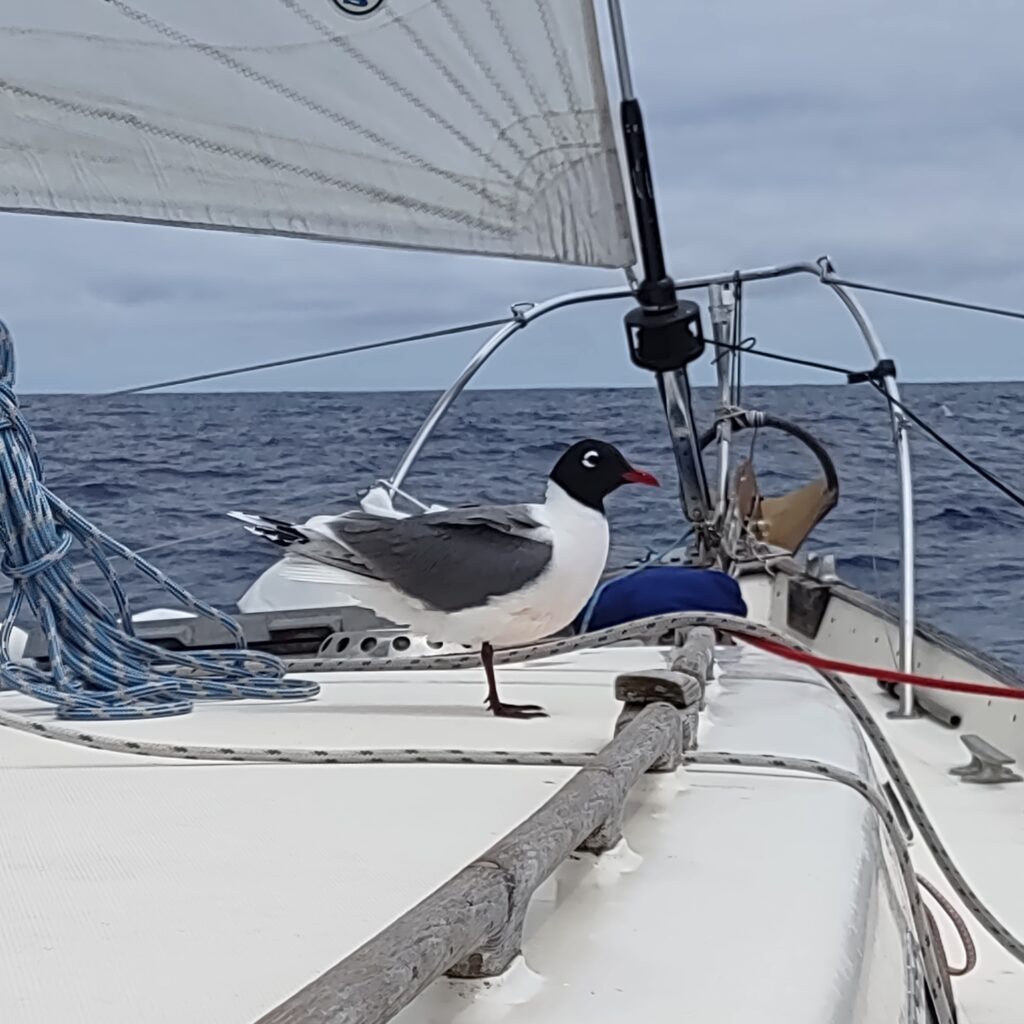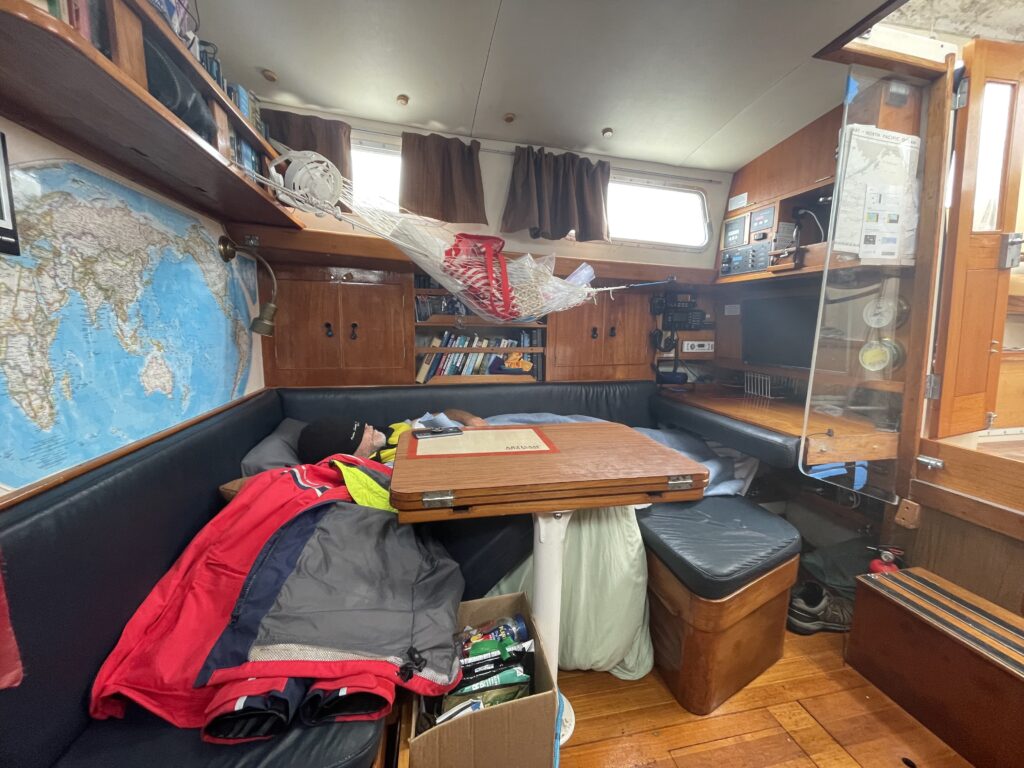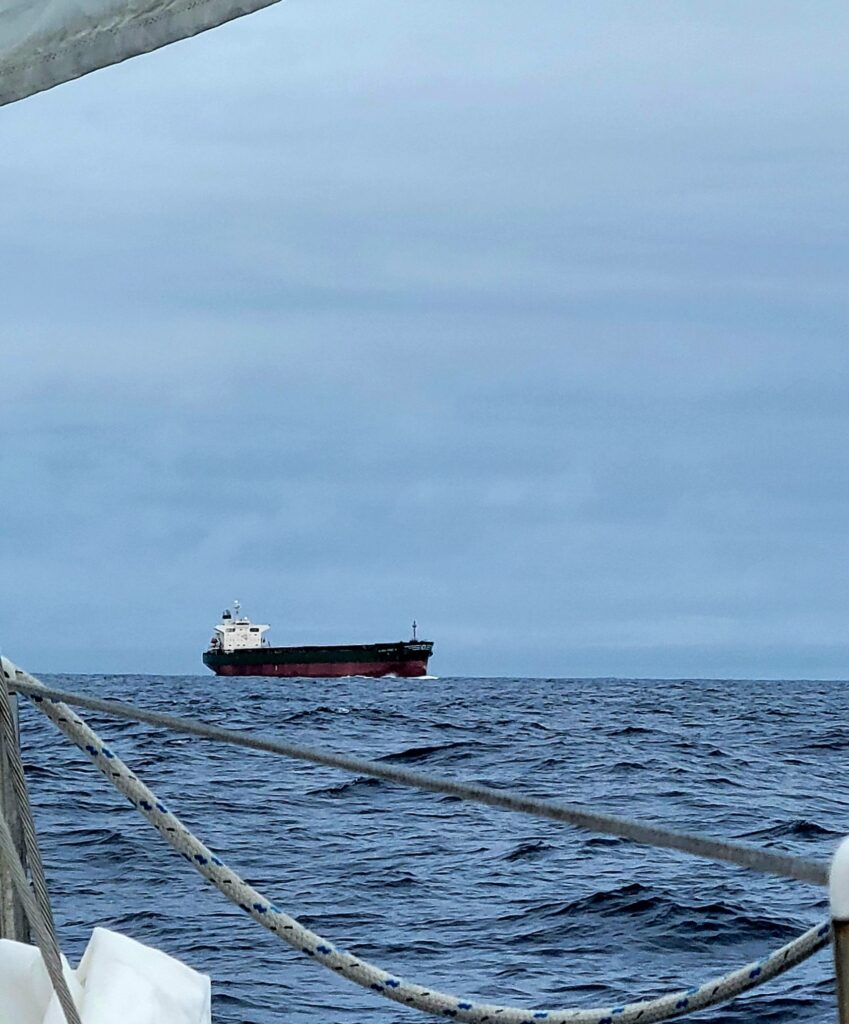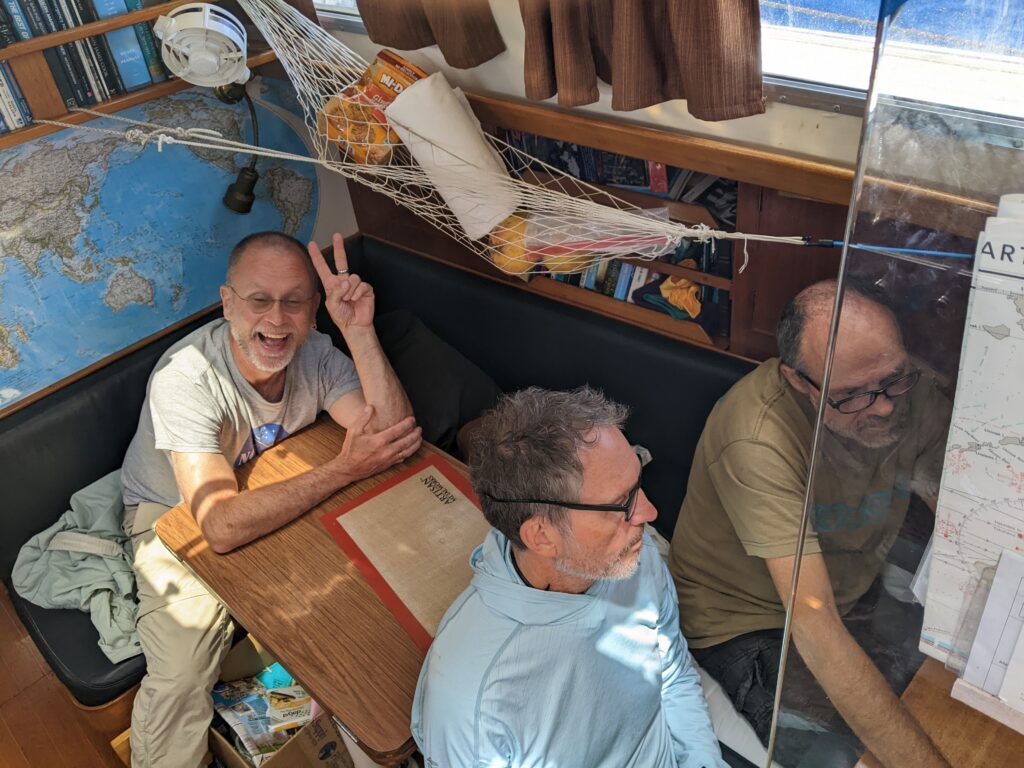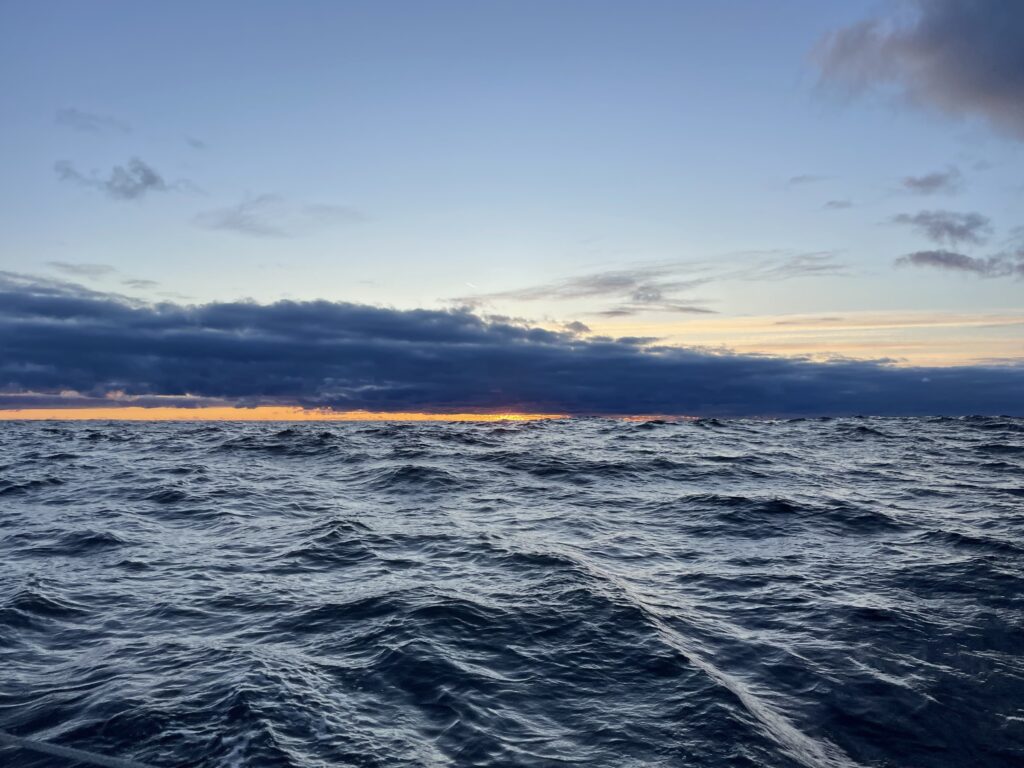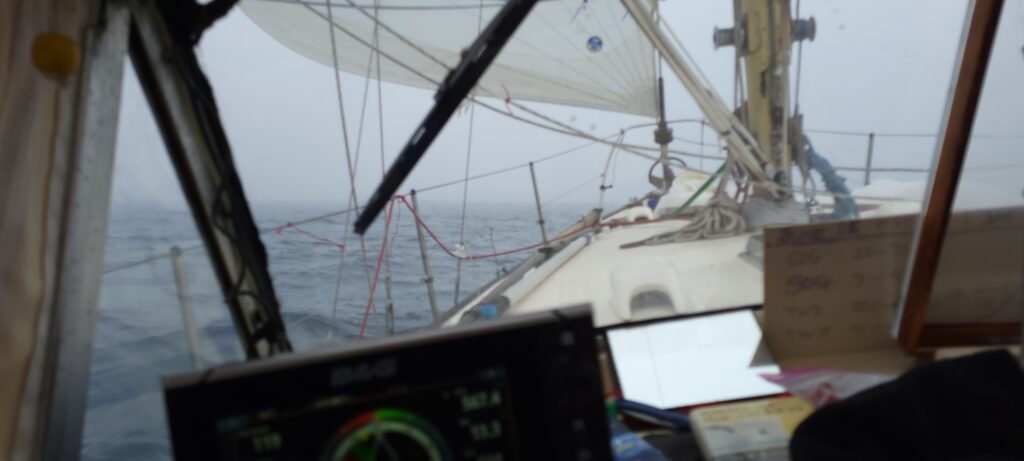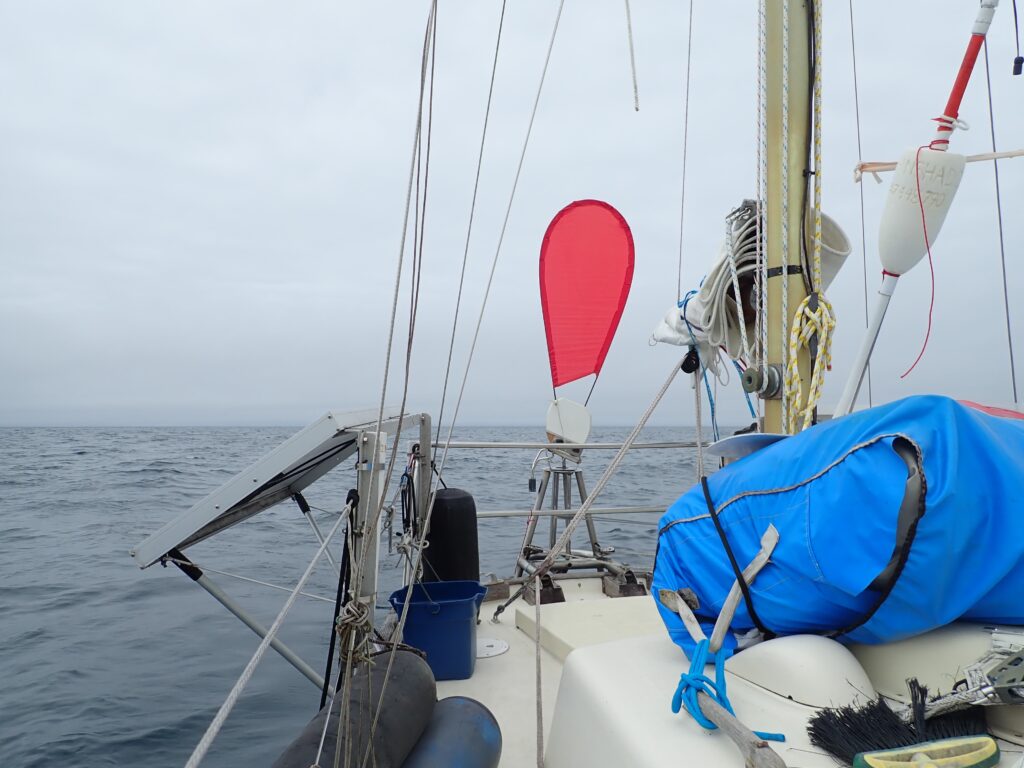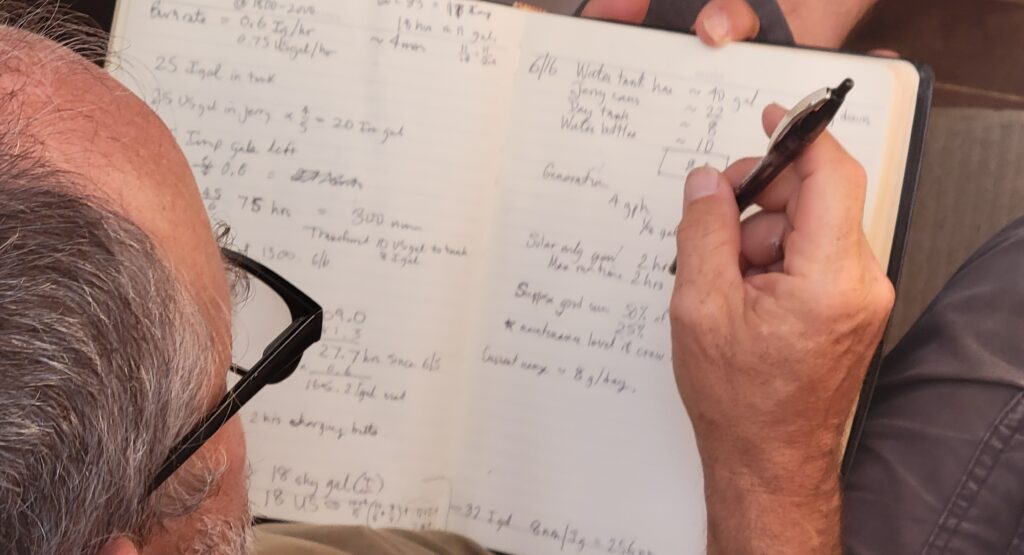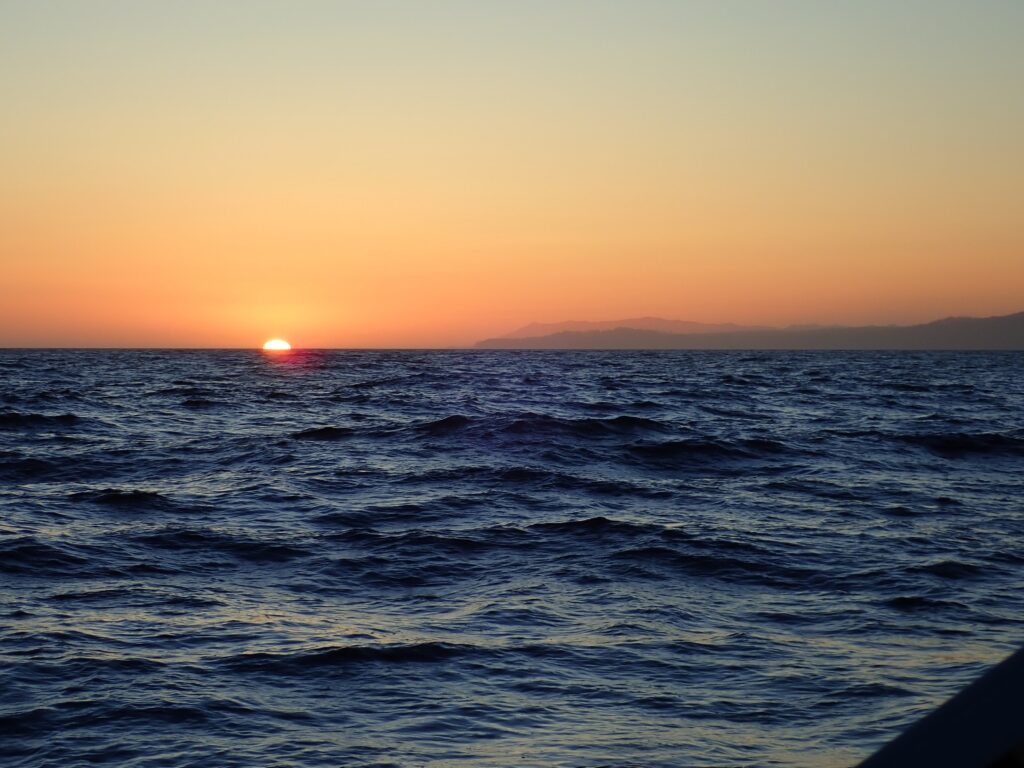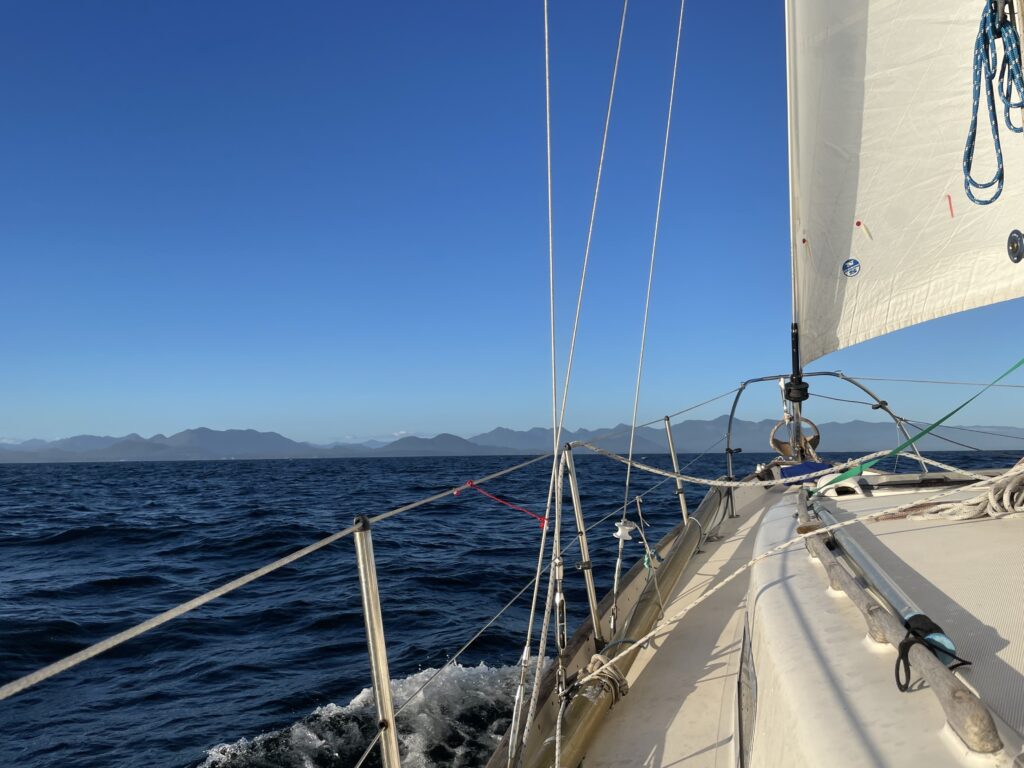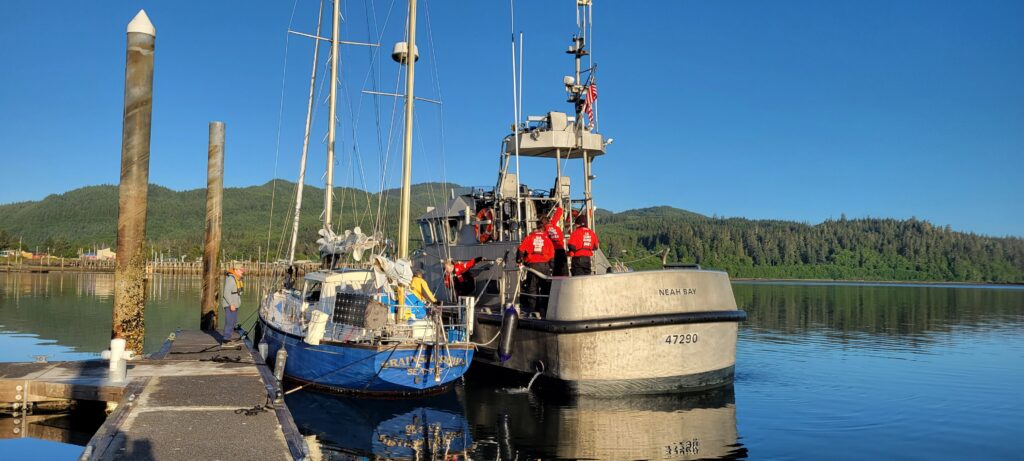Passage Back to the Pacific NW
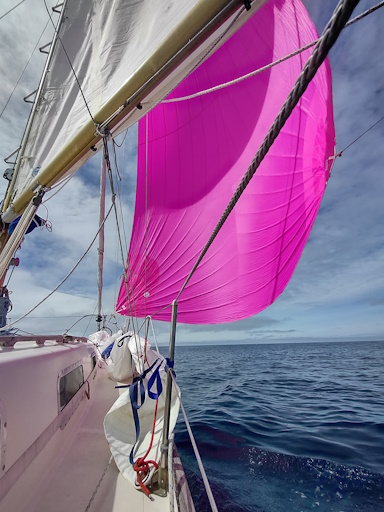
March 17th, 2024 | by Marilyn | Published in Ship's Log
Rainshadow has done another long passage, this time from Hawaii back to the Pacific Northwest. The most common question we get is, why sail her back across the North Pacific to where we already spent so many years cruising?
Between 2009 when we bought Rainshadow in Port Townsend WA, and 2016 when we did our passage to Hawaii, we cruised the Pacific Northwest from our previous home in Washington to Glacier Bay in SE Alaska. We did around 12,000 nautical miles along the Northwest coast over those 6 years, taking 3-5 month long summer cruises each year.
In 2016, we sailed to Hilo to have Rainshadow closer to our current home in Hawaii. We had planned to eventually continue south and west from Hawaii, perhaps sailing all the way to Australia. But then, each southbound cruising season came and went without our departure because, well, life happened.
In 2017, we were still refitting Rainshadow. In 2018, Kilauea volcano had a massive eruption about 6 miles from our home – most people fled the area, but it seemed wrong to sail away when our community was being devastated by a massive lava flow of unknown duration. It was an emotionally stressful and scientifically fascinating time. Twice, we sailed overnight to see the lava entering the ocean along our coastline. It was a sobering reminder of what it means to live on an island with an active volcano.
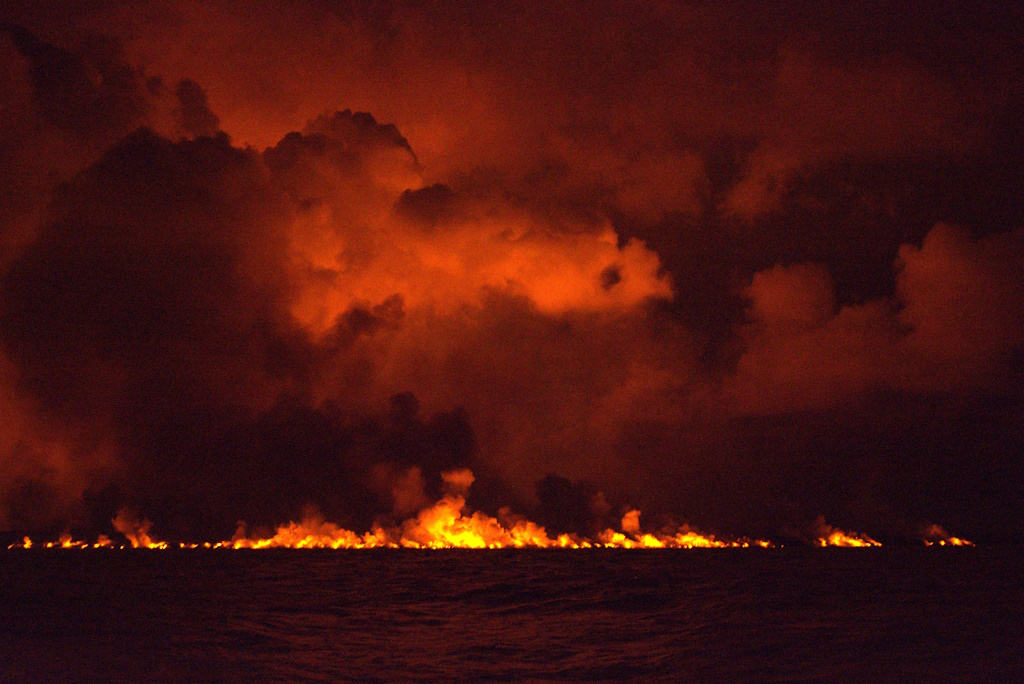
In 2019, both of us had our last living parent die, which lead to the year of family commitments. In 2020-2022, the world knows what happened. Too many cruisers had stories of either being trapped with their boat in a distant port, trapped at home while their boat was in storage in a distant port, or trapped at sea because no port would let them land. Definitely not the time to sail away. Not even to another island in the Hawaii island chain.
Living on an island, we had first hand experience of the emotions associated with tourists bringing COVID to our shores. So when in 2022 the developed world began to travel again, we suspected people living on remote Pacific islands, who maybe had not yet had access to vaccines, might not be too excited to see sailors show up at their shores after their governments invited tourist dollars to flow in.
No, the world has changed and so has the climate. Sailors need predictable winds, preferably in the range of speeds their sailboat is designed for. Just like Goldilocks, we prefer winds not too light, not too strong, but just right in sailboat design point range of 10-20 knots.
But probably the most decisive factor is, we’re getting older making us more interested in comfort than adventure. We still love sailing, so in the last years we have the physical ability to do it, enjoying beauty in known shores seems more welcoming than sailing off into the unknown.
And so, we embarked on our second North Pacific passage, this time with two crew aboard both of whom we found via the Internet. Marius was the most experienced sailor aboard, we benefited from his wisdom. Michael was the youngest sailor aboard, we benefited from his eagerness.
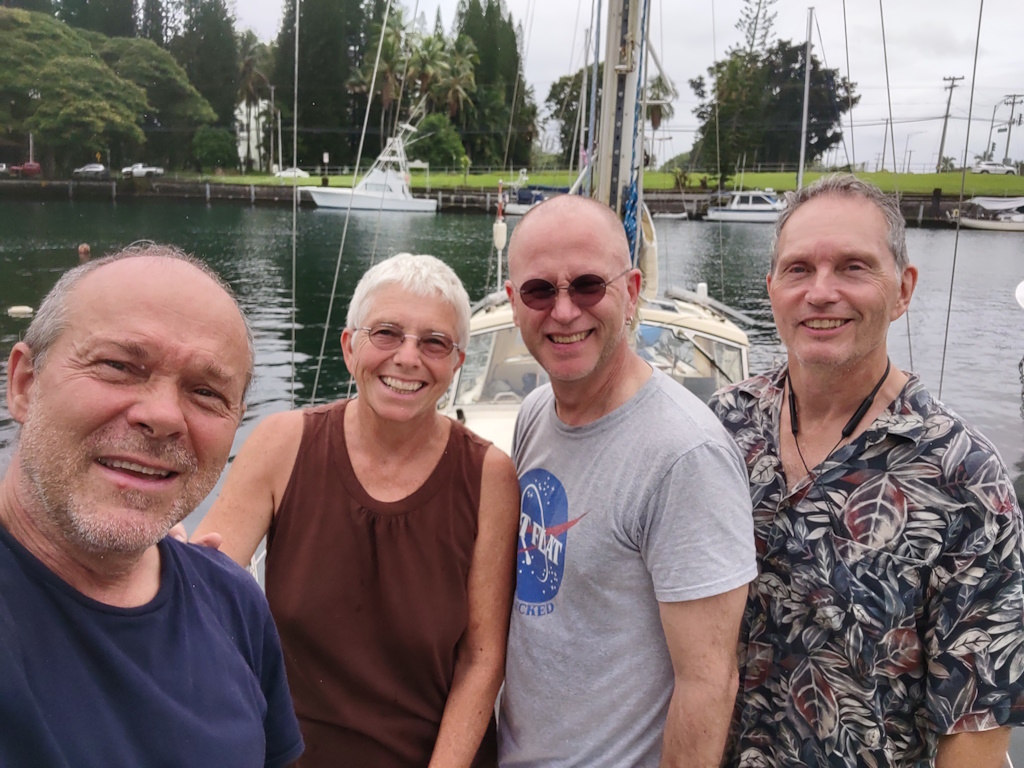
We had very good passage, characterized by a happy well-fed crew and light winds – too light when we got too close to the stationary Pacific High pressure system that is the dominate weather feature in the North Pacific summer climate. Rainshadow took good care of us, no major failures – well, maybe one failure just as we approached landfall.
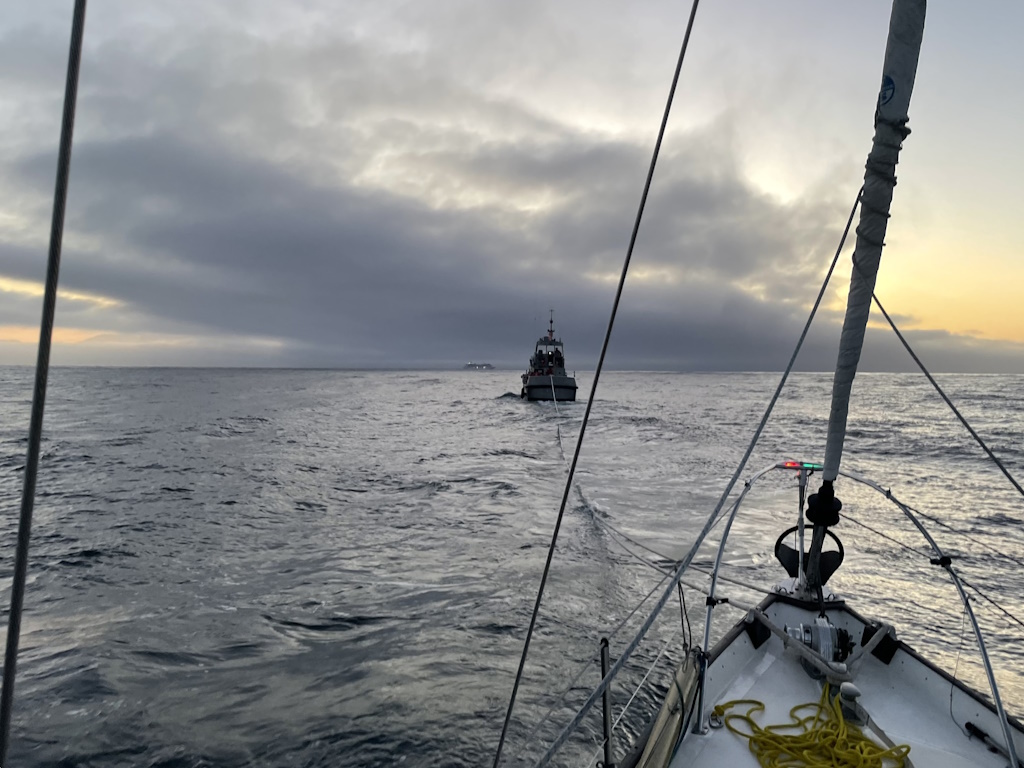
If you want to know about our exciting landfall, read Van’s blog entry for that day followed by another one that tells what we learned.
The best lyrical record of our 31 day passage comes from the blog postings that Van made while underway. You can read them all starting here. That’s a long, not always interesting to others, diary so let me point you to a couple highlights. The whole crew enjoyed joking about Topology Demons. Of course, I would pick this one about cooking as one of my favorites. Van even continued writing after landfall, writing another of my favorites, Tea for the Tillerman. There are many more gems you can discover for yourself.
The map of our route along with a short contemporaneous commentary comes from the short postings Marilyn made to our PredictWind map page and to our InReach map page. The latter requires the password “fairwinds”. The former will show PredictWind’s model of the current wind conditions, not the conditions when we were underway.
Thanks to all our friends who vicariously sailed along with us, sending us words of encouragement as we made our way across the vast ocean. It is a truly amazing experience to spend a month at sea. Even when the ocean is “calm” there are swells that pass under the boat ensuring that anything that is not secured down will find its way to a new position, perhaps after first being airborne. That “anything” includes people who fail to hold on. Then there are the skies, the water, and the mysterious world of life we floated over that would sometimes surface to remind us we were not alone. And the birds, some of which enjoyed hitching a ride, either physically on our boat, or getting an air lift from our sails. Or maybe they were just after better hunting because fish sometimes congregate under a boat, even when its moving.
After landfall in Neah Bay, and the departure of our trusty crewmates, we eventually made our way to Bellingham for a 2 week haulout to do much needed work to the hull below the waterline. Then we spent a month cruising in the Salish Sea. It’s was nice to be back sailing in those pleasantly smooth seas that exist because of the protection of the surrounding land. No swells here, just wind waves that on occasion, in predictable locations, can be so tall and steep, a sailor actually misses those giant swells at sea.
To view an image below as full screen, click on the image (not the caption overlaying the image).
